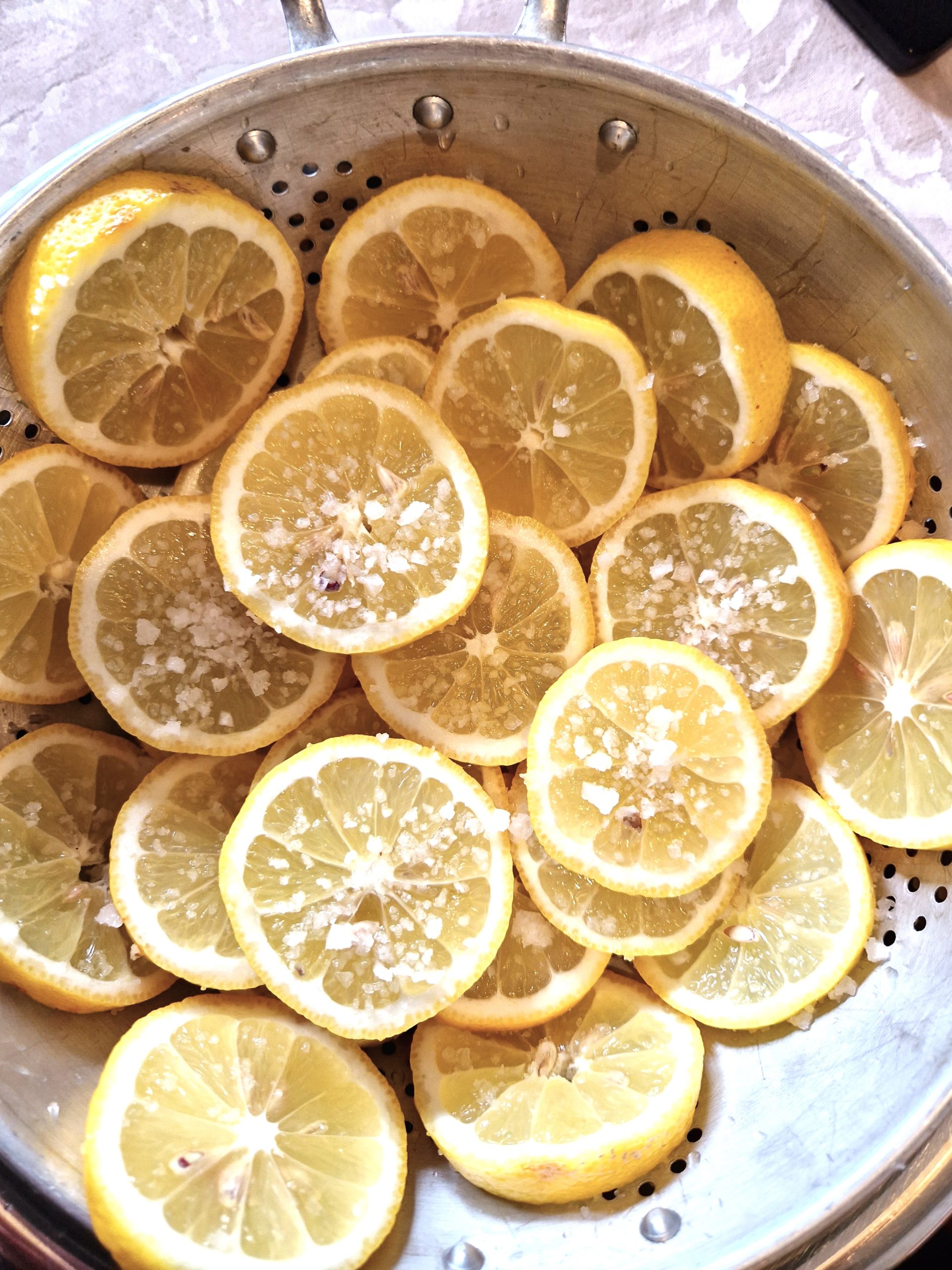
So it all started with a tajine that I saw at the local vide-grenier (vide grenier =”clear out the attic” = garage sale) to support the Calendretta, the local bi-lingual school, which teaches in French and Occitain. A brand new Emile-Henry tagine, still in its original box, never been used! Although my experience with cooking Moroccan cuisine is limited, I have always loved eating it and found the tradition and history that surrounds it very appealing. I have never owned a tajine, the quintessential Moroccan cooking vessel; its peaked top is said to yield the most succulent slow simmered stews by causing all the steamy goodness to condense and drip back into the sauce. But I have always been intrigued to find out if it actually delivered a better result than just using a Dutch oven. And here was my chance to give it a try. Admittedly, Emile-Henry is 100% French, so not authentically Moroccan, but still, lovely ceramics all the same. After a bit of haggling, I walked home proudly with a beautiful tajine large enough to cook dinner for six.
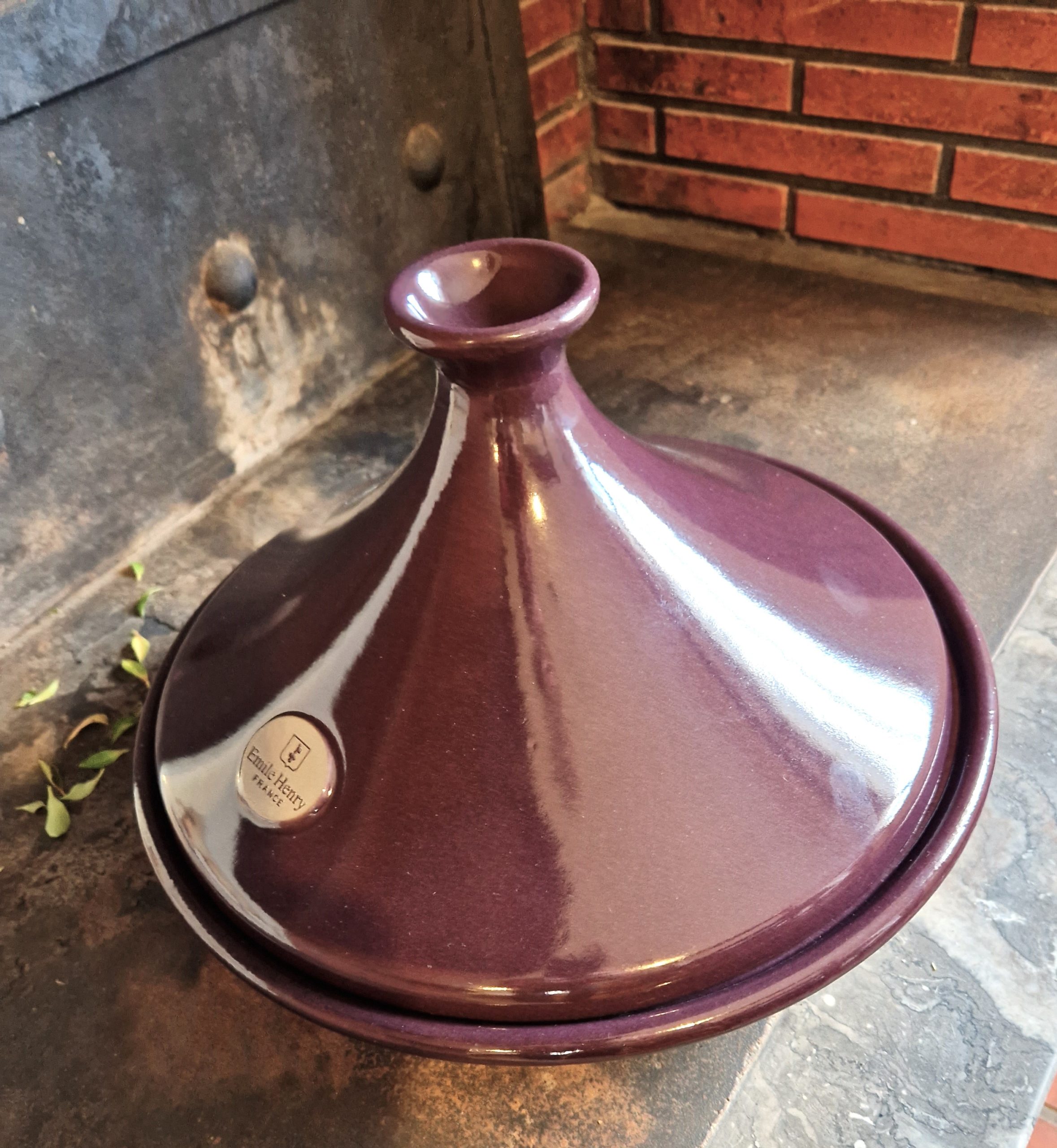
Now followed a flurry of activity as I considered my options for the first dish to cook in my tajine. I paged though the tajine recipes in my favorite Moroccan cookbook, “Cous Cous and Other Good Food from Morocco” by Paula Wolfert and was particularly interested in a recipe for a chicken tajine simmered with preserved lemons and green olives. Sheila and I both agreed that this should be our first tajine effort.
Not having access to a North African grocery store in Orthez, I decided make preserved lemons myself. We used to make them from time to time at Le Pichet and Café Presse. The ingredients could not be simpler, the job is easy and the main requirement is the willingness to wait a month for them to finish.

Sheila also noted a recipe for lemon pickles in another favorite cookbook, Claudia Roden’s “A Book of Middle Eastern Food” so we decided to make both (note Claudia Roden is also the author of “Arabesque: a Taste of Morocco, Turkey and Lebanon” which is also very good, but my personal copy is currently on a steamer somewhere between Los Angeles and Bordeaux, with much of our personal belongings).
So what is the difference between Preserved Lemons and Lemon Pickles? Preserved lemons are salted whole, then left in the salt and their own juice for at least a month, until the lemon rind (which is the part that is used in recipes) has an intense, almost fermented flavor. Lemon pickles, which, according to Roden, are eaten as a condiment in the Middle East, are salted lemons slices that are packed with chili powder and neutral oil and left to cure. In both cases, use only organic lemons to avoid pesticides on the skin, and wash well before using.
Preserved lemons
1) Wash and scrub the lemons well, the split them 3/4 of the way through the long way in quarters so that they open like blossoms. Sprinkle the inside heavily with course sea salt and then reshape the lemons.
2) Press that lemons tightly into a jar, pushing down firmly so that the juice begins to flow. Top each layer of lemons with a little more coarse sea salt. Continue adding lemons, pushing down, topping with salt, until the jar is filled. The lemon juice should cover the lemons completely. If not, add more lemon juice to cover.
3) Seal the jar, then leave in a warm place for at least one month.
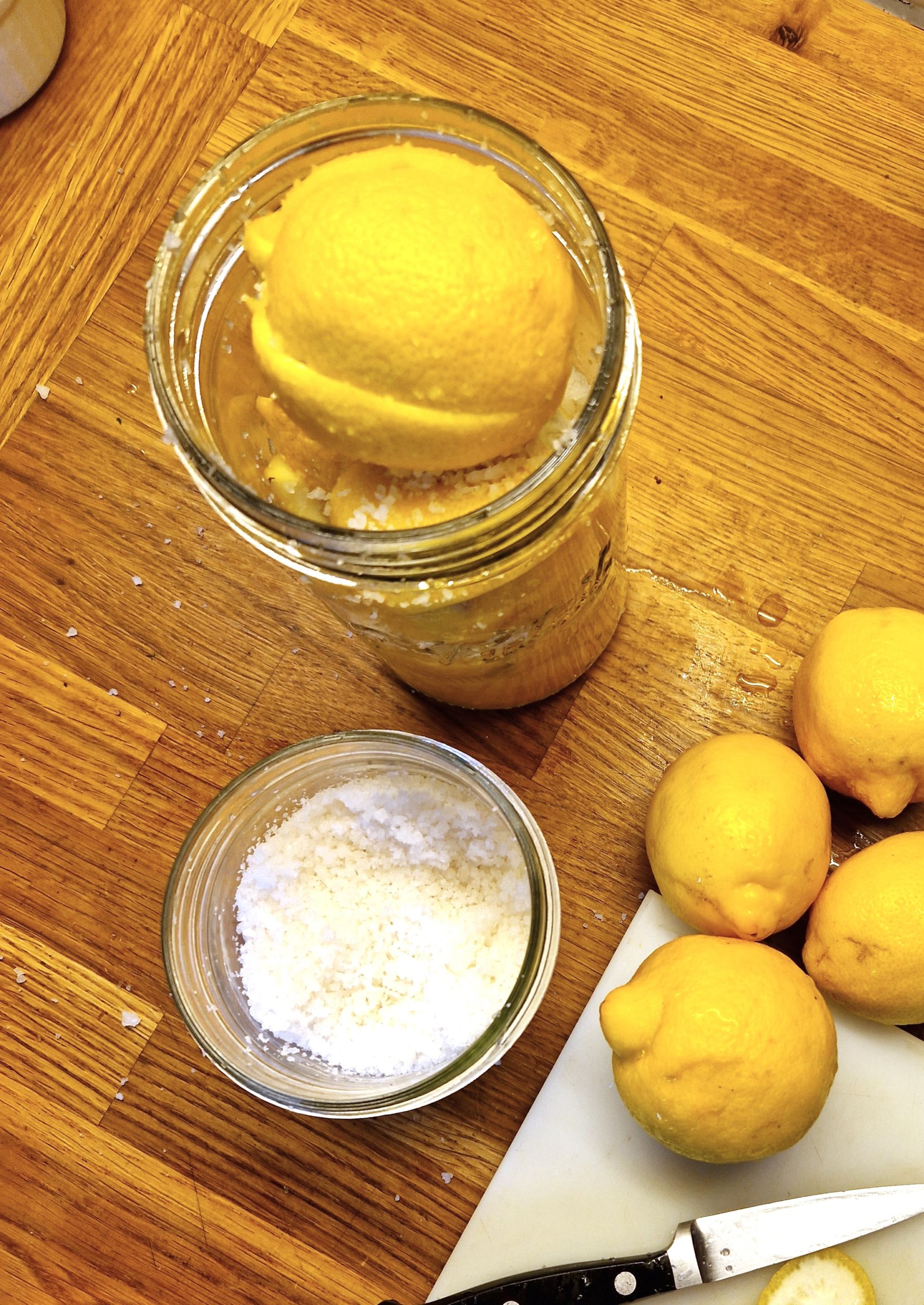
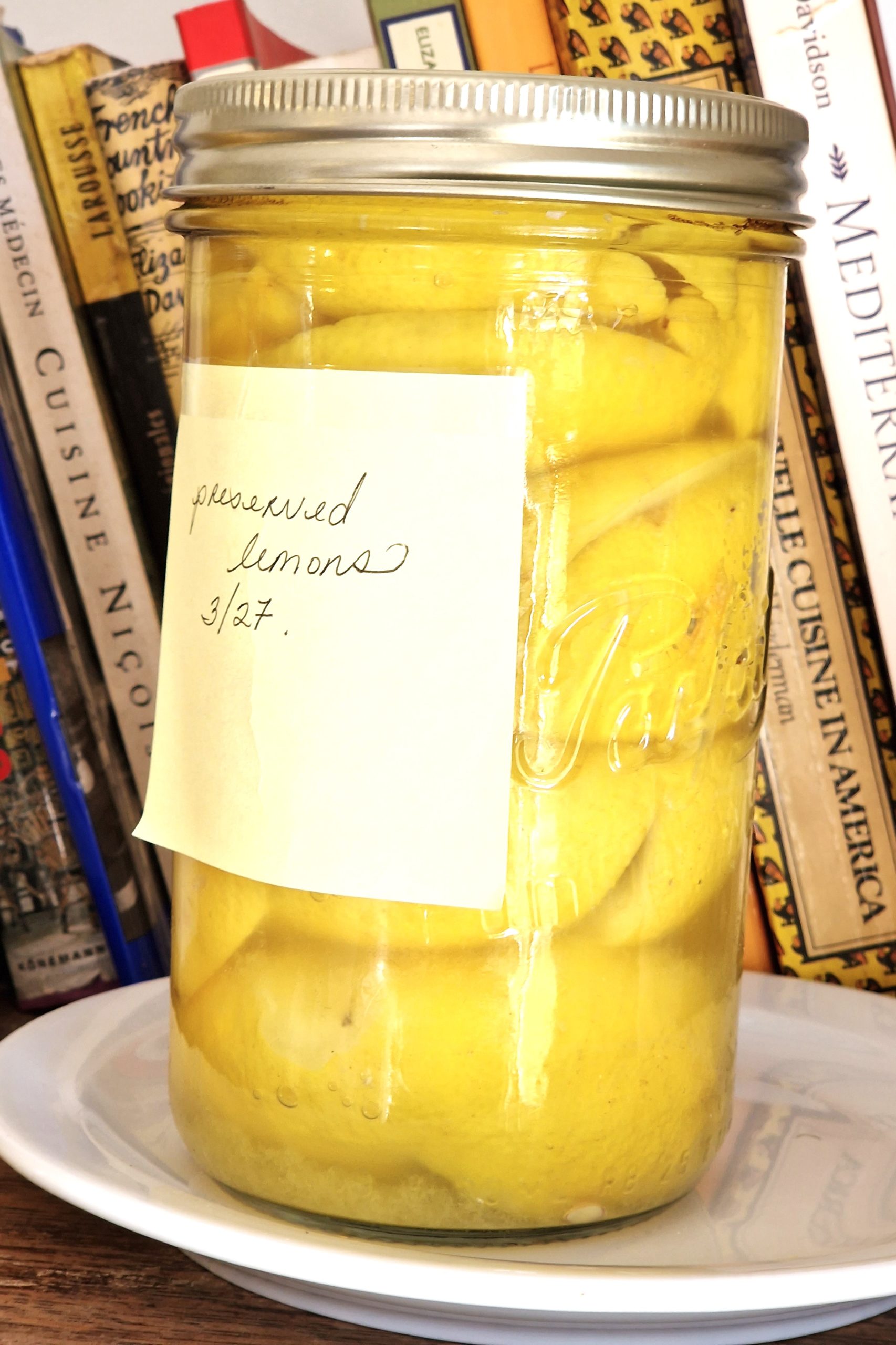
Lemon Pickles after Claudia Roden
1) Wash and scrub the lemons, then slice the short way about 1/4″ thick. Salt liberally on both sides with course sea salt, then spread on a wire rack or in a colander. Leave overnight to allow to drain. Note the lemon juice that accumulates can be used for marinades and vinaigrettes, but be careful, it is salty!
2) Layer the lemon slices into a jar, pressing down gently, sprinkle each layer with a little ground chili powder. You can use whatever chili you like, depending on your tolerance for heat. Rodin calls for paprika, we used Piment d’Espelette, which yields a fairly mild pickle.
3) Cover the lemons with vegetable oil, such as sunflower or canola. Spend the extra to buy cold pressed, organic oil, the flavor difference is very noticeable.
4) Seal the jar and leave in a warm place for about 3 weeks.
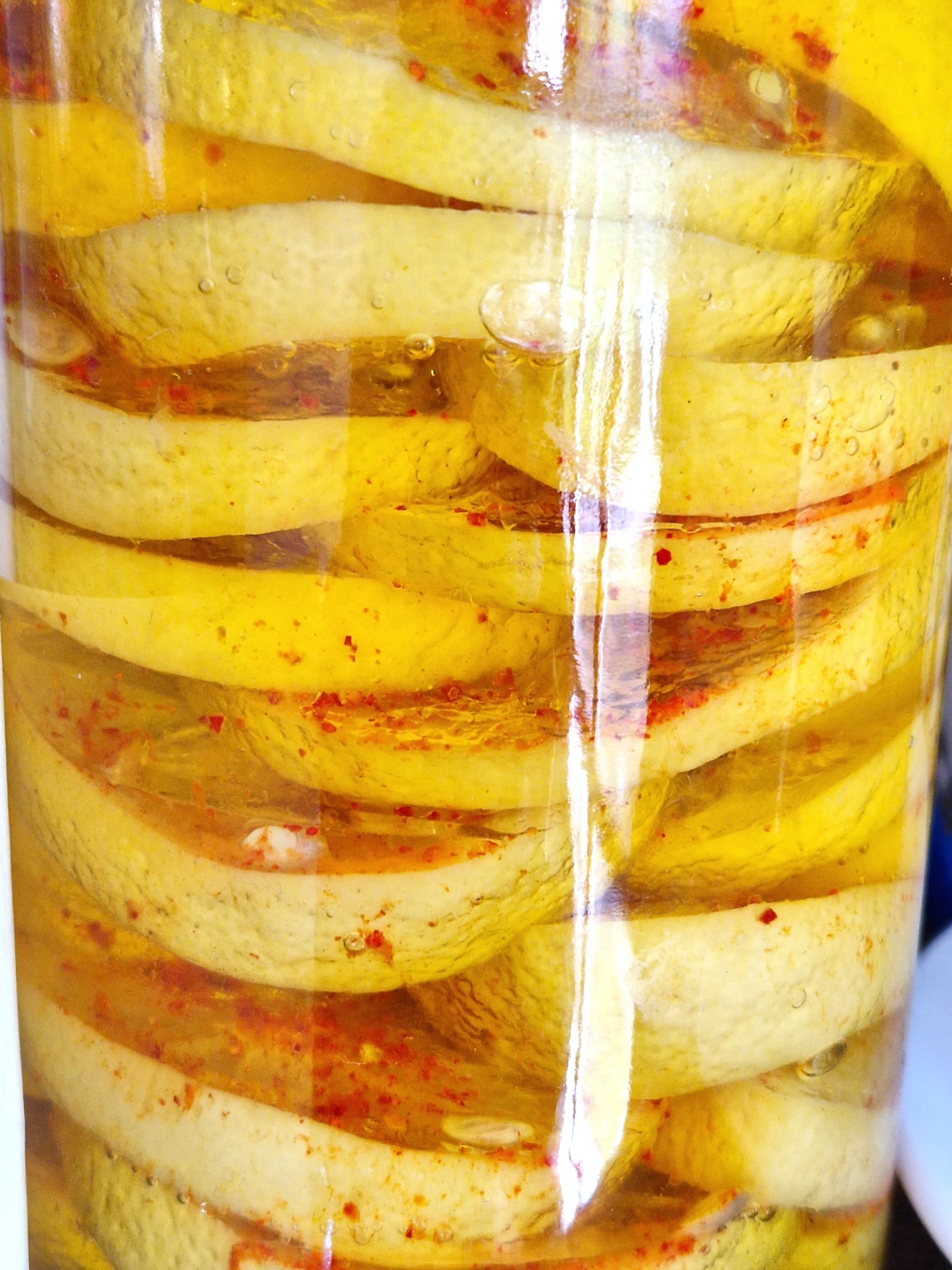
Our lovely jars of lemons have been on the shelf for most of a month now, and we are very curious see how they turned out. Then it is on to chicken tajine with preserved lemon and green olives!
Don bought me an EH red tagine for Christmas a few years ago. I love it if not just for the look and presentation. I’ve cooked a few things, but I can’t say whether or not it was better than a dutch oven, but the presentation is nice.
Thanks for the preserve lemon recipes! I have a bunch of dried currants I need to use, so I’ll try to incorporate those.
How long will the preserved lemons keep for. We do a lot of preserves and usually start more than 6 months ahead for a charity fete. Would I be able to heat the lemon juice before pouring over the lemons so that they Will vacuum seal. Would they keep longer on the shelf?
Sorry for the tardy reply. Properly stored in a cool place, salt preserved lemons will store like olives in brine, that is to say, pretty much indefinitely as long as you are careful to not get bacteria from hands or utensils into the brine when you remove some lemons for use. After about 12 months, the lemons will start to get mushy, so I would consider that a maximum.